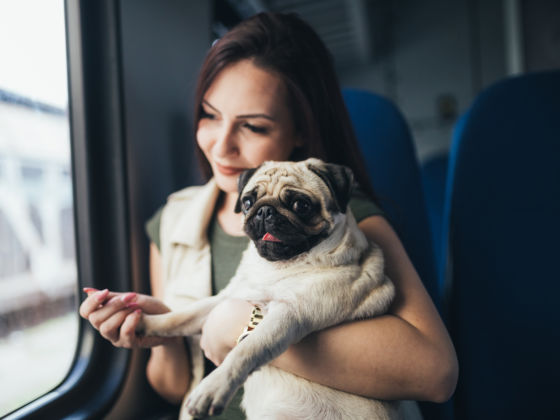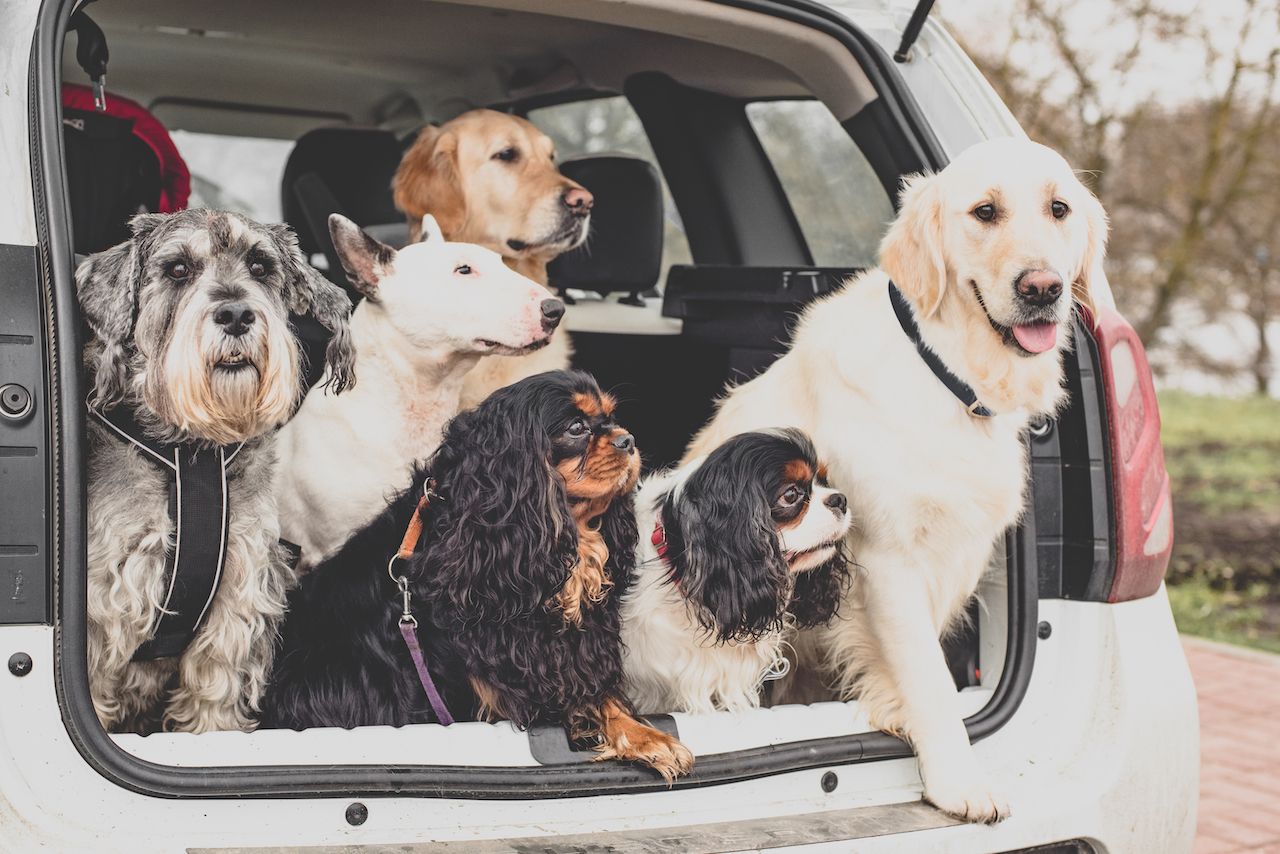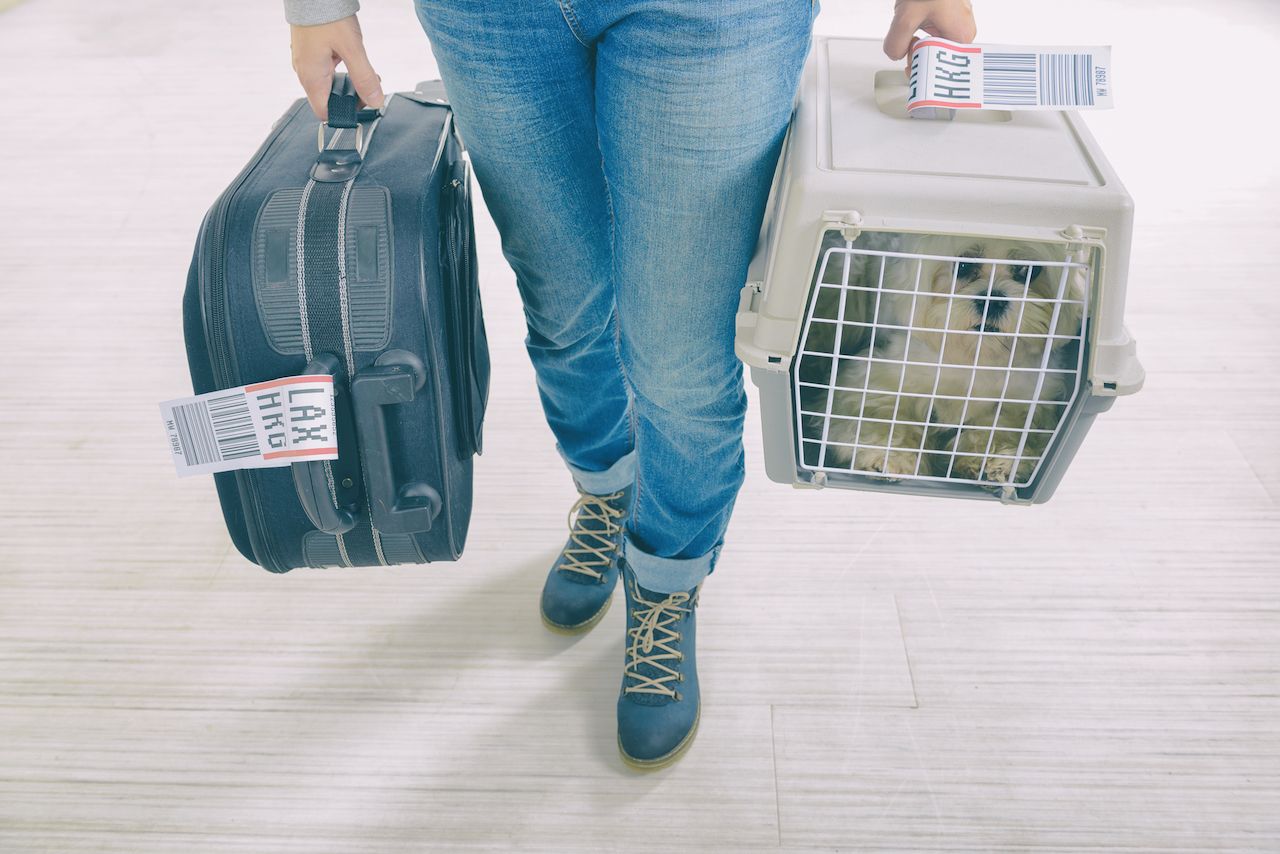Owning a dog and having a love for travel doesn’t have to be mutually exclusive. Though, if you’re thinking about getting a dog as a travel companion or you are curious about traveling with your current pet, it helps to do your homework. Some breeds of dogs like to laze on the couch all day while others could spend every daylight hour running and exploring the outdoors.

The Best Dog Breeds for Travelers, and Tips for Pet Travel
The safety and happiness of the dog is of paramount importance when traveling. One dog may take to travel with ease, while another may need rigorous training. A lot of it comes down to the breed, as breed characteristics can help determine how your dog might react to travel.
Jerry Klein, the chief veterinary officer of the American Kennel Club (AKC), is more than familiar with dogs who’ve been traveling through the all-breed dog shows he participates in and judges. “I can guarantee none of them walked there,” Klein says. “No one breed of dog is unable to accompany its owner on a trip.”
Breed doesn’t automatically rule any pups out, but it is helpful to know breed characteristics and the goals of your trip. For example, if you’re a more active traveler and enjoy taking hiking trips, a more active breed is the best companion. Breeds like Siberian huskies, vizslas, Labradors, and English springer spaniels are more likely to keep pace and enjoy the experience.
If you’re more of a restful vacationer who enjoys lots of lounging and sightseeing, a calm dog that doesn’t require hours of exercise is a better option. Lower-energy breeds like Saint Bernards, Malteses, and English bulldogs will be more than happy to chill out at the hotel and take leisurely walks around town.
Picking the right travel companion is not just about the destination, it’s also about the journey. There are different restrictions for different dogs depending on your main mode of transportation.
The best dog breeds for people who travel by car

Photo: magda_shutterstock/Shutterstock
Any dog breed can grow accustomed to traveling by car. All it requires is training. First, dogs should be kept in a crate while you are driving, according to Klein. This minimizes distractions for the driver and keeps your dog safe. Be sure to crate train your dog before going on a trip. If your dog isn’t crate trained, loading a dog up for an hours-long car ride is going to be a stressful situation for everyone involved.
If your dog is crate trained, the next step is to get them comfortable with riding in the car. This means starting with shorter trips close to home. Reinforce good behavior with treats, and be patient.
Klein has Afghan hound puppies, and he got them used to being comfortable in the car from a young age. “What I have found with my dogs on almost every trip, the first 15 minutes are the worst,” he says. “Once you get on the expressway, and you are going evenly at a constant speed, most animals settle down.”
When it comes to different breeds, the restrictions most often come down to size. If you have a minivan or truck that can easily fit a large crate, then you can likely take any size dog with you on your road trips. If you have a small, two-door car and a Great Dane or mastiff, a large crate likely won’t fit.
The best dog breeds for people who travel by plane

Photo: Monika Wisniewska/Shutterstock
Traveling with a pet by plane is more complicated. If you have a small breed, like a Chihuahua or a King Charles spaniel, you can travel together in the main cabin. Most airlines require the dog be kept in a crate that can fit beneath the seat. Just like car travel, your dog will need to feel safe and comfortable in the travel crate.
“Usually dogs heavier than 20 pounds have to fly as cargo,” Klein says. If you have a larger dog, do your research before booking your trip. Different airlines have different requirements for crate size and configuration. Some airlines also have breed restrictions, most commonly for flat-nosed breeds like pugs and French and English bulldogs. Speak with someone at the airline to determine what kind of crate you need, what paperwork you need to prepare, and what the airline does to ensure the safety of your pet.
Certain dog breeds, like border collies and German shepherds, are prone to anxiety and need frequent exercise and mental stimulation. These breeds may not do well in the confines of a cargo hold for long flights. There are dog breeds that could potentially chew their way out of their crates, Klein says. This is neither safe for the dog nor the airline’s employees.
Regardless of the breed, price is another major consideration when it comes to flying. “The cost [of flying a dog] can be oftentimes more expensive than the individual’s airline ticket,” Klein says.
Your dog’s breed can be a helpful guideline when checking airline regulations and size requirements for any form of travel, but you know your dog best. If you can ensure your dog is comfortable and safe on the journey, venture out into the world with your furry travel companion.